Budgett’s Frogs are quickly gaining fame as a fun and interesting pet amphibian.
These unique frogs have a comical appearance as their head is half the size of their body.
Their appearance and fun personality have made this species an internet star.
Despite their popularity, Budgett’s Frogs can be hard for new keepers to care for. They need both terrestrial and aquatic habitats in their enclosure and so are more suited to experienced keepers.
If kept properly this amphibian provides many years of fun. If you are up for the challenge, then keep reading to learn about their care, diet, habitat and much more…
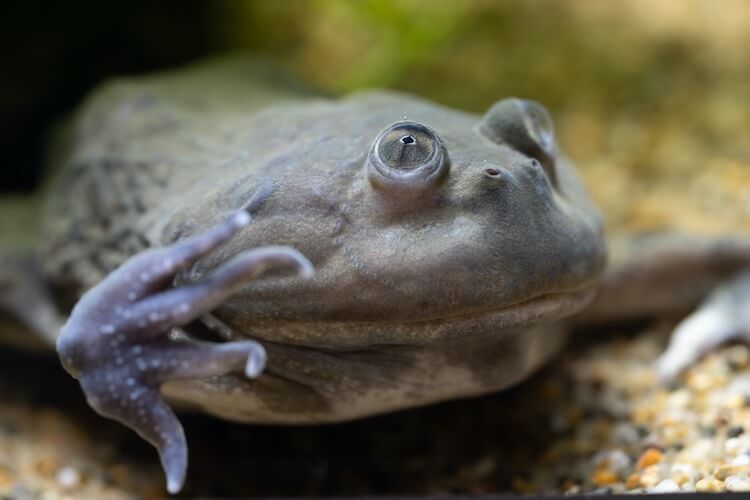
Budgett’s Frog Overview
Budgett’s Frogs are a large pinkish-gray frog. They have a flat body and an enormous mouth that takes up nearly a third of its body.
The Budgett’s Frog (Lepidobatrachus Laevis) was first described in an 1899 paper by the English zoologist John Samuel Budgett. Budgett was on an expedition to Argentina in search of lungfish, but instead discovered this frog. It is common to find this species in many countries in South America such as Bolivia, Paraguay and Argentina.
This species is part of the Ceratophryidae family. A family of horned frogs that includes the popular Pacman frog.
Unlike terrestrial frogs this species needs lots of water to show their natural behaviors. Their habitat should mimic the wet and dry seasons they are used to. Half of their tank should have water deep enough for them to submerge.
These amphibians often sit in the water with just their eyes and nostrils poking out. This behavior and their pinkish-gray color have given them the nickname “hippo frogs.”
These frogs are also well known for their defensive behaviors.
If cornered they will puff up their bodies and stand as tall as possible. They will hiss, squeak and scream too. If that fails they will lunge and bite. Being bitten is quite an unpleasant experience as they have large toothlike ridges on their jaws and two sharp fangs.
Another interesting behavior displayed by this frog is dormancy (i.e. estivation).
During the winter (typically from November to February) they go into a period of dormancy. Usually during this time period it is the dry season in their natural habitat.
These frogs were first captive bred 100 years after Budgett described them. In the early 2000s private breeders began a captive breeding program.
Budgett’s frogs are known to be intelligent and active amphibians with a bold and inquisitive personality.
They are a look and don’t touch amphibian for experienced keepers. If you are looking for a frog to handle then look at the White’s Tree Frog or American toad.
What We Like About Budgett’s Frogs
The popularity of this species is quickly growing. However, the cannibalistic tendencies of their tadpoles make raising them a challenge. Because of this many keepers buy them as juveniles or adults.
When choosing a frog look for a healthy individual with clear skin, a full body and a strong feeding response. They should also be strong swimmers and powerful jumpers.
Pros
- Intelligent and active for most of the year.
- Large size and funny appearance.
- Happy to eat a varied diet in captivity.
Cons
- Needs a terrestrial and aquatic habitat.
- Does not like being held and will bite.
- Requires a three month dormant period each year.
Species Appearance
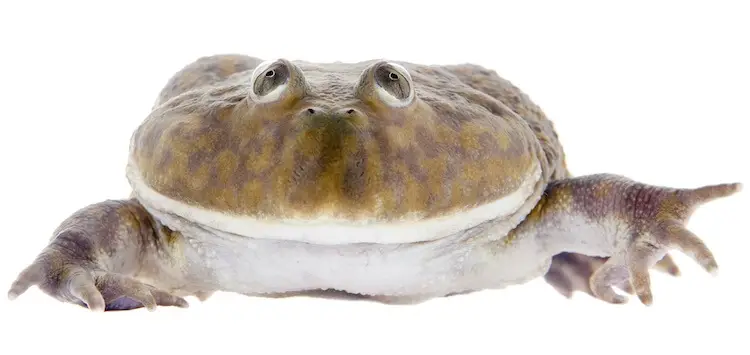
The Budgett’s Frog is a large amphibian that can grow to six inches in size.
Interestingly nearly half the size of their body is made up of their head!
When viewing this frog from a birds eye view they are flat with small round eyes and nostrils that sit at the very top of their head.
Young frogs often have bright green splotches over their eyes that fade with age.
Adults are a uniform greenish brown or grayish pink with a white or yellow belly and eyes. Most individuals have a yellow stripe across their lips. Some individuals may show darker green and yellow mottling on their back and legs.
Their skin is smooth and free of the bumps that are common with other frogs. They are usually coated in mucus that helps to preserve moisture.
Males can be quickly identified by their smaller size and dark throat pouch. Their dark throat pouch is most prominent during the breeding season.
Budgett’s Frog Size
Young frogs are typically 1.5 inches in length after metamorphosis.
Budgett’s Frogs grow to their adult size of four to five inches in just under a year.
Their short legs make them seem bigger than they are, but they are still not as big as the Pacman frog.
Females are larger than males. It is common for females to grow to five inches but some of the largest individuals will grow to six inches. Males are slightly smaller at around four inches.
These frogs are fairly heavy for their size and weigh around half a pound once fully grown.
Budgett’s Frog Care
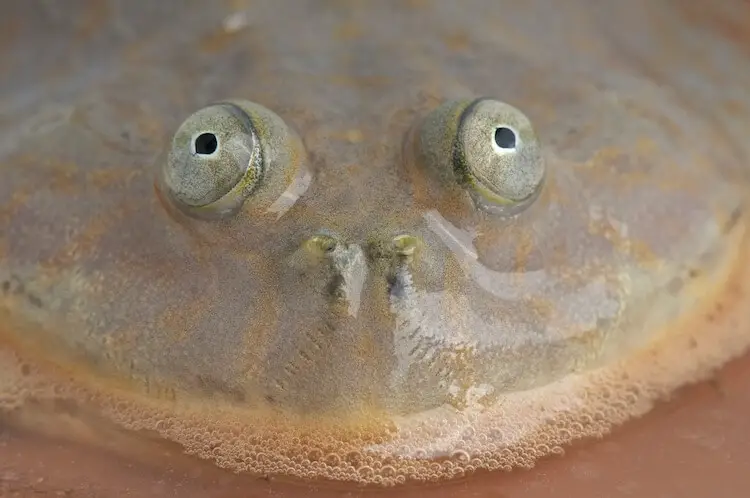
This species has some very advanced care requirements and a difficult tank setup. They are not suitable for many beginners. This amphibian is best suited for someone with prior experience in keeping frogs.
Diet and Feeding Guide
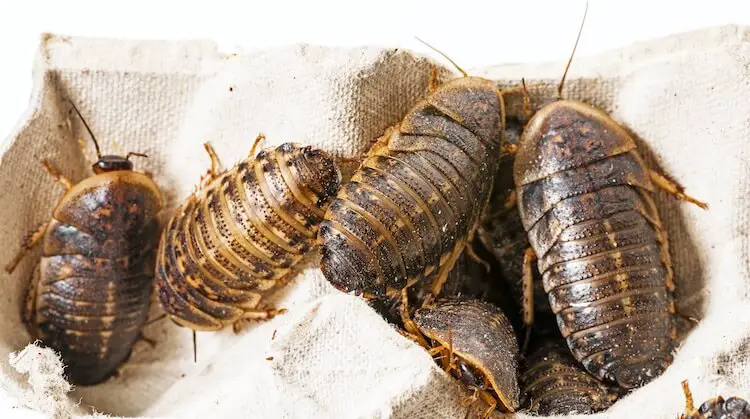
Budgett’s frogs are a carnivorous species.
They are also unique for being carnivorous tadpoles. As tadpoles they will eat the larvae of other frogs as well as each other.
Adults prey on whatever will fit in their mouths. This is in part thanks their large mouths and impressive set of strong jaws that are more developed than other frog families.
These frogs are primarily ambush hunters. This means they sit in water or mud and wait for their prey. In the wild they eat fish, worms, other frogs, snakes, small mammals and insects.
When kept as pets it is best to feed them insects for many reasons:
- Insects are easier to find, feed and store when compared to mice or snakes.
- Insects can be fed without the risk of them seriously hurting your pet.
- It makes it easy to monitor their diet and maintain your pet’s weight.
Crickets, dubia cockroaches, earthworms, hornworms, and the occasional guppy fish are all excellent meal choices. Never feed your frogs wild-caught insects because these can potentially carry toxic pesticides or parasites.
Young frogs should be fed four to five times a week. Their portion size should be determined by how much they can eat in 15 minutes. As they grow decrease the feeding frequency to three times a week and feed larger meals (e.g. 5-6 large crickets).
Always dust insects with a vitamin D3 supplement every other feeding time.
Do not try to hand-feed your frog. Budgett’s will take more than just the prey item and have a nasty bite.
For the same reason, frogs should not be fed directly on loose substrate. They can accidentally eat it, which can lead to impaction (a potentially fatal intestinal obstruction).
Lifespan and Health Concerns
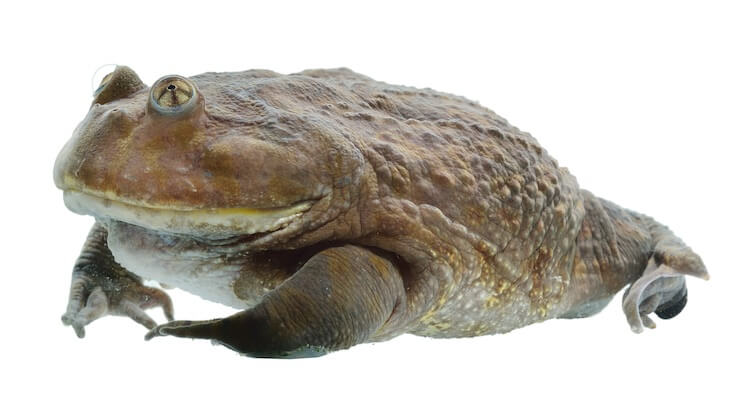
With proper care Budgett’s Frogs have a lifespan of 20 years.
Like many frogs they are highly sensitive to chemicals and pesticides. They are also susceptible to fungal infections and obesity.
Fungal infections are normally caused by a combination of high humidity, low airflow and poor cage cleanliness. These infections appear as white or flaky patches of skin. The fungus Chytridiomycosis is a widespread and deadly infection that is becoming more common in captive frogs.
Obesity is another common problem.
Wild frogs rarely get the chance to grow obese. However, pet species have a steady and reliable supply of food. They will continue to eat even after they are full. To keep your frog at a healthy weight you should carefully observe their body shape.
Budgett’s frogs should be longer than they are wide. A frog that develops creases along its limbs is becoming obese. If you notice an adult rapidly gaining weight then decrease the amount of food offered until its weight stabilizes.
Signs They Are Healthy
- Smooth skin.
- Strong feeding response and appetite.
- Frequently moving between water and land.
- Active defense response.
Sickness Symptoms
- Closed eyes or limbs held tight to the body.
- Refusal to eat.
- Spending all its time in the water or on land.
- Not passing regular feces.
Habitat
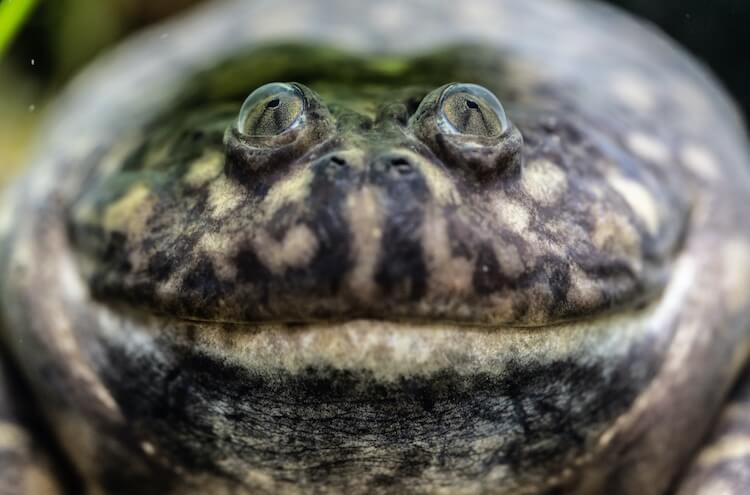
Budgett’s frogs are native to Gran Chaco.
Gran Chaco is a large flat region of dry scrubland forest in South America that undergoes seasonal flooding and dry months.
During the rainy season Budgett’s Frogs are found near pools of water. They use these pools to spawn and hunt. Their tadpoles must grow extremely fast to emerge as young frogs before these pools dry up.
In the dry winter months this species goes through a period of dormancy. They will burrow in the mud and form a water-retaining cocoon of skin.
In captivity you will need to replicate both the wet and dry cycles.
Budgett’s Frog Setup
Adults are happy to live in a 30-gallon aquarium that measures 30”x12”x12”. Due to their cannibalistic nature they should not be housed with other frogs.
A glass or plastic enclosure with a front-open design is ideal. This will help to preserve moisture and provide ease of access for their regular feeding.
- Tank Type: glass.
- Tank Size: 30-gallon.
- Lighting: none.
- Substrate: mix of organic potting soil and coconut fiber.
Half of the tank should have enough water to fully cover your frog and allow them to swim. You will need to use an aquarium heater to keep the water temperature between 76 and 82°F. Make sure the heater is securely attached to the tank and can’t be knocked loose by a swimming frog.
You can build up a sloping area of stones or plexiglass to give your frog easy access to both the wet and dry parts of the tank.
These frogs are primarily nocturnal and so do not require any special lighting.
Temperatures in the tank should not exceed 77°F. Temperatures above 80°F can be fatal. Keeping the tank in a warm room should be enough to keep it around 77°F. Using two digital thermometers will provide an accurate reading of the surface temperatures.
Under tank heaters should be avoided due to the possibility of burns to your frog if it burrows too far down.
Budgett’s Frogs prefer high humidity of around 60 to 70%.
To maintain a good humidity level you should use an organic potting soil and coconut fiber substrate. If you choose to use a loose substrate then you will need to feed your frog out of a dish. This will help to avoid impaction.
Finally, include lots of ceramic pots, PVC pipe cut outs, and shoeboxes. They will give your frog lots of places to hide. Make sure they are washed thoroughly and free from harmful chemicals or sharp edges.
Species Behavior
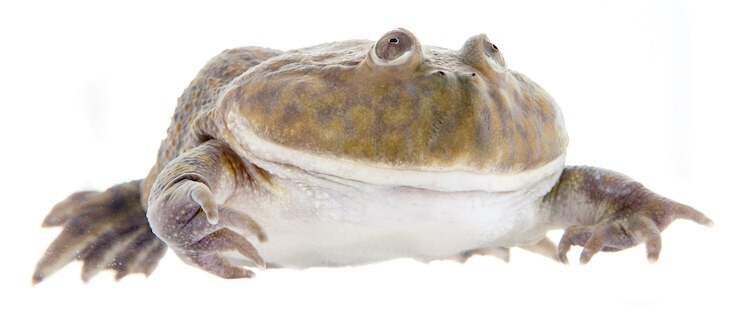
This frog’s behavior is largely determined the season.
During the rainy season these frogs congregate around temporal pools to breed. Males will croak loudly to attract females.
For the rest of the year these frogs are highly aggressive and will attack and eat each other.
If confronted by a threat they will immediately show aggression. They inflate their bodies and stand up on stiff legs. If touched they will emit a high-pitched scream. If you continue to harass them they will lunge and bite. Once these frogs bite they are reluctant to let go.
Due to their aggressive nature, strong jaw, and sharp fangs you should not handle this species. A bite is painful and may draw blood but it is not venomous. If your frog must be moved then coax it into a container.
Budgett’s Frogs spend most of their time in the water with just their eyes exposed.
They are relatively active amphibians and will move around the décor in their enclosure. You will need to make sure there are no heavy decorations that could fall on or trap your frog.
During the winter your frog will go into a period of dormancy. It will dig under the substrate and create a cocoon of skin.
In captivity frogs can be encouraged into dormancy by reducing the air temperature. Whilst reducing the air temperature you should also increase the frequency of feeding for two weeks. This will let your frog build its fat reserves. After two weeks stop feeding. Your frog should begin to estivate after a few days and should not be disturbed. Dormancy will last for two to three months.
Budgett’s Frog Facts
| Species Facts | |
|---|---|
| Other Common Names | Hippo Frog, Freddy Krueger Frog |
| Scientific Name | Lepidobatrachus Laevis |
| Family Name | Ceratophryidae |
| Genus Name | Lepidobatrachus |
| Range | Bolivia, Paraguay, Argentina |
| Size | 4 to 5 inches |
| Lifespan | 15 to 20 years |
| Popular Alternatives | Tomato Frog, Pacman Frog and Pixie Frog |
Care Guide Summary
The Budgett’s Frog is an unusual and unforgettable species that is quickly becoming a popular pet. Their activity and intelligence make this amphibian more entertaining than most.
To replicate their wild environment this frog needs both terrestrial and aquatic spaces in their habitat. They also go into a period of dormancy for several months over the winter. Prompting dormancy and maintaining the weight of your pet can be tricky for beginners.
For these reasons they should only be kept by those confident in their ability to care for an exotic species.
With the right care your Budgett’s frog will thrive for over 15 years.
Let us know if you think you are up for the challenge of keeping this species below.

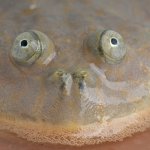
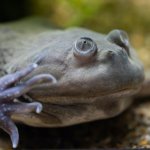
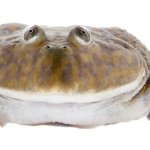
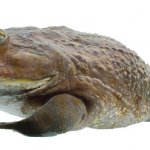
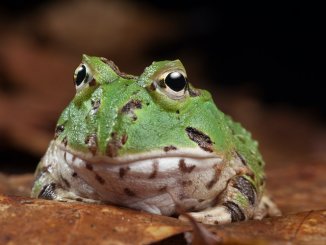
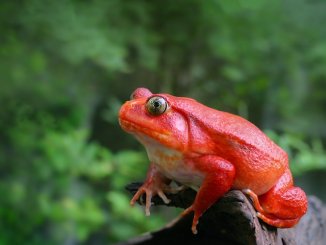
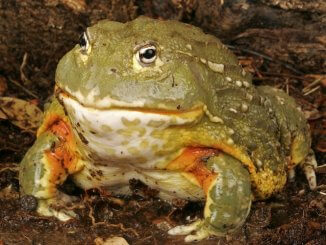

I don’t think some of this is accurate. For one, budgetts frogs don’t really spend much time at all on land, even when offered, unless to aestivate and you can generally accommodate this by creating an aestivation chamber. You can absolutely keep them in an aquarium with no substrate because of the impaction risk, less handling of the frog, and being able to maintain healthy and clean conditions in a cycled tank, otherwise you are changing the water and substrate daily due to their daily waste. Them spending all their time in water is not a signifier of health.
It’s definitely true: they spend most of their time in water. They are great swimmers. But an ideal tank setup, in my opinion, should include a fiber substrate and a ‘land element’, for a variety of reasons: thermoregulation, mimicking its natural habitat, estivation.